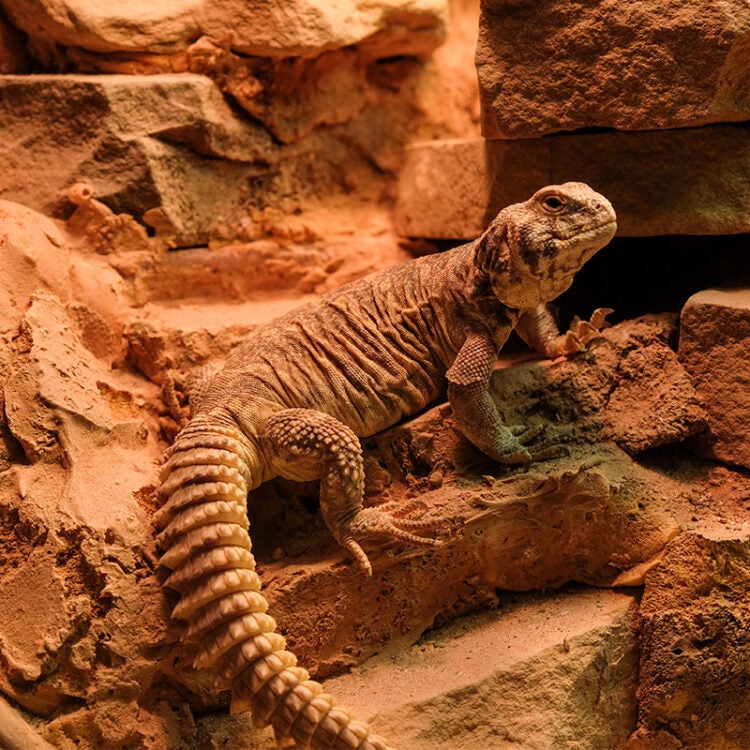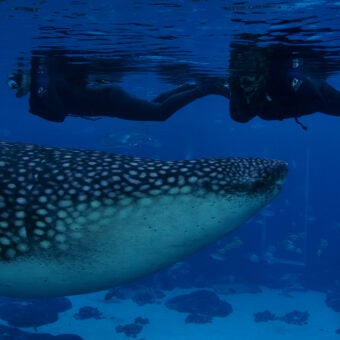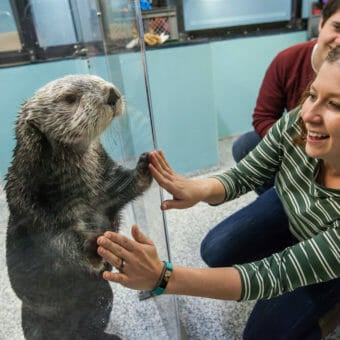-
Size
15 inches (38 cm) -
Diet
Leaves, seeds and flowers of many desert plants -
Range
Egypt, Israel, Saudi Arabia and Yemen -
Habitat
Dry, rocky desert environments with sparse vegetation
Physical Characteristics
- Coloration of male is primarily bright green, blue or sometimes red with striking yellow or brown pattern on the back.
- Female is more muted than the male, typically a lighter shade of brown with dark brown, yellow or red spots.
- Juveniles are cream to light brown with a black pattern on the back.
- Tail covered in rings of spiky scales.
- Common length of about 15 inches (38 cm).
Animal Fun Fact
Male ornate uromastyx are primarily bright green, blue or sometimes red with striking yellow or brown pattern on the back. Females are more muted than the males, typically a lighter shade of brown with dark brown, yellow or red spots.
Diet / Feeding
- Generally herbivorous, with a diet consisting of the leaves, seeds and flowers of many desert plants.
- Opportunistic feeder; will occasionally feed on invertebrates.
Range / Habitat
- Occurs on the southern Sinai Peninsula in Egypt, southern Israel, western Saudi Arabia and northwestern Yemen.
- Found in dry, rocky desert environments with sparse vegetation.
- Takes shelter in rocky crevices.
Reproduction & Growth
- Female lays between 7 and 17 eggs in June; eggs hatch about 60 days later.
- Juveniles reach sexual maturity at around 2 years of age.
Conservation Status
- “Least Concern” on the IUCN Red List.
- The overall population is thought to be decreasing due to overcollection for the international pet trade and habitat loss.
Additional Information
- Also known as the ornate mastigure or the ornate spiny-tailed lizard.
- Active during the day and most active during the hottest part of the day.
- Life expectancy of up to 20 years.
- May be solitary or live in small groups with one dominant male and several females.
- The dominant male will defend its home range from other males.
- Males have been observed turning over a female and walking in a circle over her abdomen. The reason for this behavior is not known, but may it be tied to the bond between the dominant male and the females in its territory.







